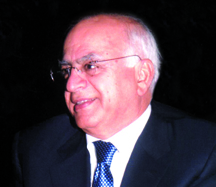Why and where did they migrate?
the first major wave of arab and muslim immigration to the united states occurred between 1870 and 1924. most migrants were from lebanon, with a smaller number from syria, both then part of the ottoman empire. the majority were maronite, greek orthodox, and catholic christians.
muslims made up no more than ten percent of these early immigrants. the main reasons for migration were the search for job opportunities, as well as to avoid conscription into the ottoman army, particularly for christians and shiites. migration became a mass phenomenon in the early twentieth century but stopped in 1924 when restrictive u.s. immigration laws were enacted.
these lebanese immigrants settled mainly in new york, boston, detroit, and other midwestern states. most were young, unmarried men with limited education, taking on jobs in agriculture and a variety of other professions.
although muslims have been present in america since the 17th century, their numbers were small. most arab immigrants, aside from lebanese and syrians, were from yemen and iraq, particularly between 1900 and 1930, and worked in factories and on railroads in states like michigan and california. some settled in agricultural areas in the midwest. their presence in places like fresno, california, was notably large, as i observed during a visit in the 1970s. iraqi immigration increased further after world war ii, especially during the 1950s and 1960s, driven by political events and economic changes in iraq.
the fi rst mosque in the united states was built in 1934 in cedar rapids, iowa, by syrian and lebanese immigrants. prior to 1915, albanian muslims had established a mosque in maine, which was essentially a private home.
the majority of shiite immigrants from southern lebanon, who had suffered under successive rulers including the ottomans, the french, the british, and local feudal lords, chose to migrate extensively to africa and, to a lesser extent, to south america, particularly brazil, argentina, and venezuela.
their migration was driven by economic, political, social, and religious factors. many opted for africa during the french mandate period, encouraged by the french to work in their extensive colonies there. civil society organizations also played a role in facilitating the migration of large numbers of these communities.
due to the atmosphere of freedom in the west, many lebanese immigrants there became highly creative. some of the most notable among them emerged as pioneers of the modern arab literary renaissance, excelling in poetry, novels, philosophy, and art, and leaving a lasting impact on modern arabic literature. among the most prominent is gibran khalil gibran (1883–1931), the poet, writer, and painter, best known for his book “the prophet,” which remains one of the most famous works in both the east and the west.
there is also amin al-rihani (1876–1940), the traveler, thinker, writer, and philosopher. rihani is considered one of the first advocates of dialogue between east and west and authored works in both arabic and english. he is renowned for his writings on freedom and reform, as well as his travels throughout the arabian peninsula.
the poet mikhail naimy (1889–1988), a critic, writer, and philosopher, and contemporary of the great poet elia abu madi (1889–1957), is regarded as one of the most important poets of the arab diaspora.
fawzi al-maalouf (1899–1930) emigrated to brazil, and his brother shafi q al-maalouf (1905–1976) was a poet and journalist. elias farhat (1893–1976), a selftaught poet, also emigrated to brazil, among many others.
the majority of these creative figures were maronites, due to the church’s early emphasis on compulsory education in their villages several centuries ago.






